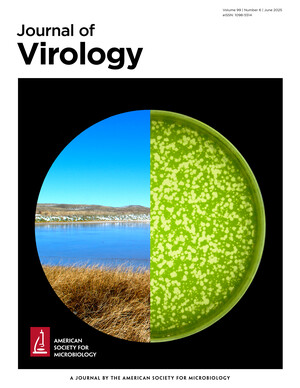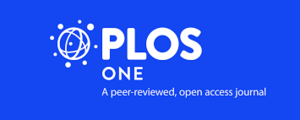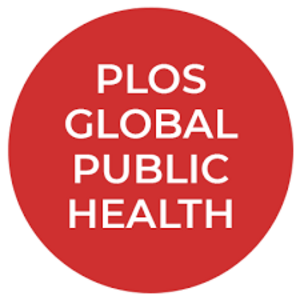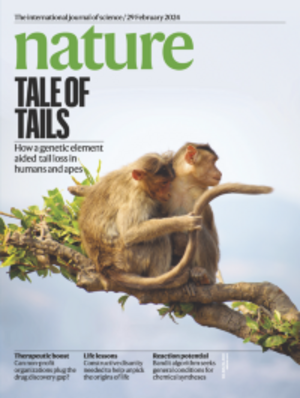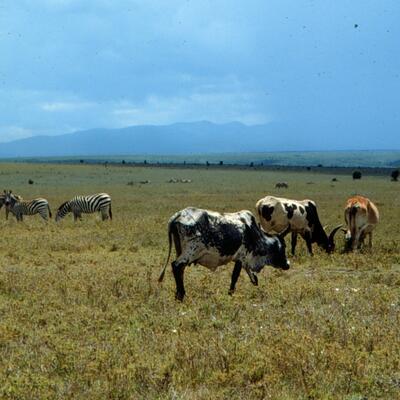
ILRI scientist, Hung Nguyen-Viet discusses his experiences with the WHO team investigating COVID-19 origins
Peter Daszak and Hung Nguyen-Viet, members of the World Health Organisation (WHO) team tasked with investigating the origins of the coronavirus disease (COVID-19), walk at a park of their hotel in Wuhan, Hubei province, China February 6, 2021. (Photo credit: REUTERS/Aly Song)
‘As soon as I understood the nature of the mission, I realized how important it could be.’—ILRI’s Hung Nguyen-Viet
Hung Nguyen-Viet had recently moved to Nairobi to assume a co-leadership position of the Animal and Human Health Program at the International Livestock Research Institute (ILRI) when he was invited to join the high-profile World Health Organization (WHO) expert mission to China. Hung hadn’t applied for any WHO position, but was, in many ways, a natural selection for an international team investigating the origins of the virus: He had spent several years in Hanoi as ILRI’s regional representative for East and Southeast Asia, researching the link between health and agriculture, food safety and wet markets, and infectious and zoonotic diseases. ‘I think I was chosen for the team precisely because of my experience in wet markets and food safety in developing countries, particularly in Asia,’ he says. ‘As soon as I understood the nature of the mission after a call with Peter Ben Embarek, WHO lead of the mission, I realized how important it could be,’ said Hung. ILRI’s David Aronson interviewed Hung about his experiences on the mission, which garnered headlines worldwide, and on the broader lessons for ILRI and One Health.
David: The WHO team’s mission, as I understand it, was to discover the origin of the SARS-CoV-2 virus, which causes COVID-19. Is that too simple a way of characterizing it?
Hung: The high-level objective of the mission was to study the origin of the SARS-CoV-2 virus. But I need to give you some of the background to the mission. In May 2020, the General Health Assembly asked the Director General of the WHO [Tedros Adhanom Ghebreyesus] to lead a study to understand the origin of the virus that causes COVID-19. But before that, in February 2020, a WHO delegation was already in China, not to study the origin of the virus, but to discuss with the country how to deal with the ongoing outbreak there and afterwards, they released a report. After this, they sent a WHO group to China in July-August 2020 to discuss with the Chinese what to do to study the source of the virus. And during those two or three weeks, they came up with terms of reference (ToR) of the study on the origin of the virus, which was published on the WHO website. When we were invited to join the study, there was already in place a ToR of the studies on the origin of the virus, a ToR that was neither a WHO nor a Chinese one, but a joint product of the two sides.
David: How do scientists like you and in this team go about discovering the origin of a virus? What is the process or methods used?

Hung Nguyen-Viet, Co Leader, Animal and Human Health program. (Photo: Duong Minh Tuan/ICRAF)
Hung: Yes, that is a good question. That’s why we had to go to Wuhan as the first outbreak happened there in China. In epidemiology, the so-called ‘outbreak investigation’ is a study to try to understand how the disease started. You undertake a study of the place, you look at the situation, you ask people if they’ve had any recent disease experiences with similar symptoms, you collect information linked to the outbreak, you try to find information on the origin of the pathogen.
David: And you looked at like the early cases that are recorded?
Hung: That is correct, but not me, the team did it and in particular the epidemiology team. The team was divided into three working groups. The first team focused on molecular epidemiology. The second on epidemiology. And the third on animals and environment, that is the team I was a part of. We went to visit the hospitals and talked with health workers who treated the first cases in Wuhan in December 2019 and we traced the information back to the source: What happened? What’s the history of these patients? In fact the Chinese scientists had already done important work tracing all these early cases, looking at all the COVID-19 cases, but also at more than 70,000 cases having flu-like illness and respiratory problems in more than 200 health institutions in Wuhan City in the months preceding the arrival of COVID-19.
One of the interesting findings was that the association between the early cases and the Huanan Seafood Market wasn’t as strong as I had thought. It seems clear that the virus was circulating not only within the market but also in other places. For example, we were able to meet with one of the first people infected with the virus and he hadn’t visited the Huanan Seafood Market at all.
David: You and your team were there just for a month. What was the team able to accomplish?
Hung: The straightforward answer is that we didn't find the origin of the virus. But that was not surprising: These studies often take months, even years. What we did find was some important clues that require further study.
For example, in my animal and environment group, we focused heavily on the interface between animals, humans and the environment. We were given information by Chinese scientists when they conducted the study in the Huanan seafood or wet market. From an outside perspective, when people hear that the name of the market is the Wuhan Huanan Seafood Wholesale Market, they might imagine that this is a large market where they sell only seafood products. But when we visited the market, we realized it’s not a wholesale market for seafood alone. Of course, the main product was seafood, but they sold all sorts of things: vegetables, meat, animal-source food, and not only at wholesale but also at the retail level. It was estimated that about 10,000 people go in and out of that market a day. You see that is quite a high number of people in a small area, which can serve as an amplifying place for the virus if it is present there.
You might ask what was important about visiting the market? The market was closed on 1 January 2020. And the same day, the Centers for Disease Control (CDC) scientists from Beijing came to study the market. They collected samples from different shops and environments, including the floor and the sewage system, and frozen seafood and meat products. All these samples, with the exception of the floor and the sewage, tested negative for SARS-CoV-2. The virus was present in the environment, but not in any of the products in the market. But among the meat samples, they did find some wildlife species among the products being sold on the Huanan market, and some of these species are known to be susceptible to SARS-CoV virus. And this particular wildlife, which is probably farmed, rather than caught in the wild, was identified as originating from the provinces of Yunnan, Guangdong, Guanxi in Southern China where coronaviruses have been found in bats. The farming of wild animals for food is not uncommon in China and other countries in Southeast Asia. During our mission, it was reported that a new virus from bats was found in Cambodia and Thailand. One of our recommendations is that we extend the research on animals from China to other countries in Southeast Asia.
Inside Wuhan Huanan Seafood Wholesale Market where early cases of Covid-19 were recorded, one year after the market was closed (Photo Hung Nguyen/ILRI).
David: Maybe it's fair to say that you didn't find the answers, but you found some of the right questions? You have some good leads to track down?
Hung: As I said earlier we didn't find the origin of the virus, but we found information that could lead us to deeper studies. For example, from animal and environment studies, it is recommended to continue surveys of potential wildlife reservoirs and intermediate hosts, particularly in South China and Southeast Asia. Species of particular interest are Rhinolophus horseshoe bats and related species, pangolins and relatives, civets, ferret badgers, mink, racoon dogs and other species known to be susceptible to SARS-CoV. Further traceback of the farms that raised domesticated wildlife with an epidemic link to the Huanan market, as well as other markets. In molecular epidemiology and in epidemiology there are specific recommendations for further studies in these areas.
David: Where's the team now? Are you going to disband? Or are you going to reconnect and do a second study?
Hung: Since we returned from Wuhan in early February, the team has continued to work together virtually, as we are finalizing the report. I hope that the report will be released in the next few weeks or so. There aren’t any plans in place for this team to do further field work.
David: Could you talk about what implications this study - and your participation in it - have for ILRI and for the broader One Health effort?
Hung: I was quite happy to be part of the WHO team as someone coming from ILRI and CGIAR, because we’ve been doing great research in One Health especially in developing countries for decades now. One Health means different disciplines work closely together to achieve better health for people, but also for animals and the environment. One Health is about putting our human health at the intersection between human, animal and environment health, and recognizing the interlinkage among these three ‘healths’. I believe that it is a very important approach that we need to deploy more and more in zoonotic disease contexts where these diseases jump from animals (wild or domesticated) to humans.
The composition of the joint WHO-China team reflects quite clearly the One Health concept: The team obviously has medical doctors and epidemiologists, but it also has biologists like me, vets, ecologists and food scientists. We’re all working together using the One Health approach to research the origin of the virus. At a broader and system perspective, we need One Health for disease treatment, but it is also useful for the prevention and surveillance of diseases. We are talking about using One Health approach in COVID-19 research, meaning One Health is useful for tackling emerging zoonotic diseases. But the One Health approach is equally important to apply for other subjects such as food safety and antimicrobial resistance (AMR) that we are currently researching at CGIAR. All these topics are on the interface of human, animal and environment health.
Now, coming back to ILRI. I see several opportunities that ILRI and CGIAR in general can be part of in promoting this One Health approach. Traditionally, when you talk about livestock, you talk about domesticated animals: pigs, chickens, cattle, goats and sheep. Many zoonotic diseases do come from livestock, not this pandemic specifically, but others: for example, avian influenza, brucellosis, leptospirosis, cysticercosis, anthrax and so on. We need to continue research on these diseases that are endemic in certain regions, that affect poor people, and to engage in better surveillance, detection, prevention and interventions to stop their spread.
A second area is the farming of wild animals for food or for fur, which is popular in some countries. These farmed wild animals might be infected with pathogens (virus, bacteria, parasites) and then infect people directly or through food/markets. In terms of COVID-19, we have seen that minks were infected by SARS-CoV-2. It's important to know what animal species are susceptible to what pathogen, so that we can monitor and avoid them.
Finally, the interface between wildlife-livestock and people. The practice of hunting, trading and eating bush meat, for example, exposes people to pathogens from wildlife that are often the reservoir host of pathogens. And in that case, it is very important to study and surveille the pathogens in wildlife populations, because they can jump to livestock and people. I think that we might consider doing more on these areas of wildlife-livestock farming.
In addition, most of the pandemics and zoonotic disease outbreaks these days come from developing countries where ILRI and the other CGIAR centres have a presence. For example, the emergence of COVID-19 and SARS is linked with China, Ebola with DR Congo, and avian influenza with Indonesia or Vietnam in the past. The CGIAR’s presence in some of these countries gives us an advantage because we have existing partnerships to build upon, we know the interactions people have with domestic and wild animals there and we know with whom to work, in ways that outsiders might not.
Another advantage for CGIAR centres is that they have world-class lab facilities, which are already supporting research in zoonotic and emerging diseases. Here at ILRI’s Nairobi campus, for example, we have labs, including the biosafety level 3 laboratory (BSL-3 Lab), which is appropriate for work involving microbes that can cause serious and potentially lethal disease —where we can do research on important diseases. Currently we’ve repurposed our BSL-3 Lab to help the Kenyan government test more than 30,000 samples for COVID-19.
This is a clear example of One Health in practice. In this specific context, ILRI, an animal health and livestock research institute, has repurposed its lab to serve a public health purpose. At the same time, the One Health Center for Africa (OHRECA), which is funded by the BMZ and was inaugurated in 2020 here at ILRI, is building the capacity of researchers and strengthening local, regional and global networks to provide evidence-based policy advice on One Health in sub-Saharan Africa. The ongoing One CGIAR reform is an opportunity to strengthen One Health in CGIAR, showing how CGIAR can contribute more to improve human health and prevent diseases, in particular through the livestock sector, and to better serve our clients who include donors, policymakers and communities.
David: Well, thank you so much for your insights. I'm sure this whole experience was a compelling one for you, both personally and professionally.
Hung: Yes it was. It was a special mission for me. Never before have I conducted research under such circumstances. The days were very long, we were working 10–14 hours a day, then falling asleep, and continuing the next day. It was interesting to see how the media followed the mission but also the political pressure under which we worked.
Read more:
I went to Wuhan to investigate the origins of Covid. Here's what we can learn from the Huanan Market (The Telegraph)
Covid-19 investigators turn focus onto Chinese wildlife farms (South China Morning Post)
Origines du coronavirus : du marché au labo P4, dans les pas des enquêteurs de l'OMS à Wuhan (L'Express)













